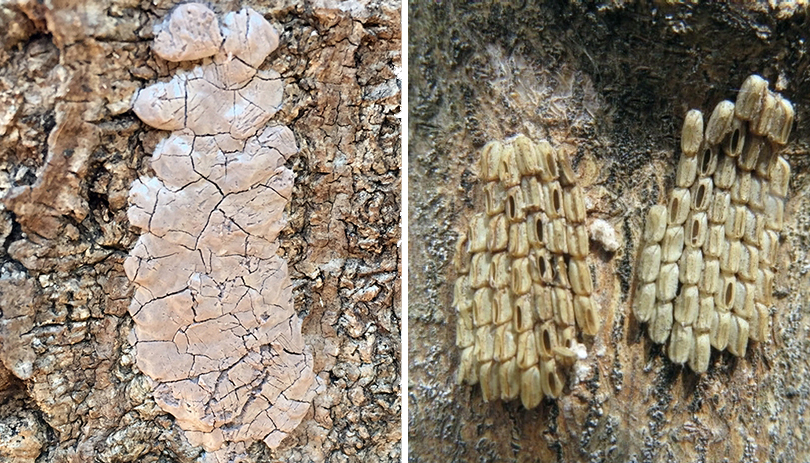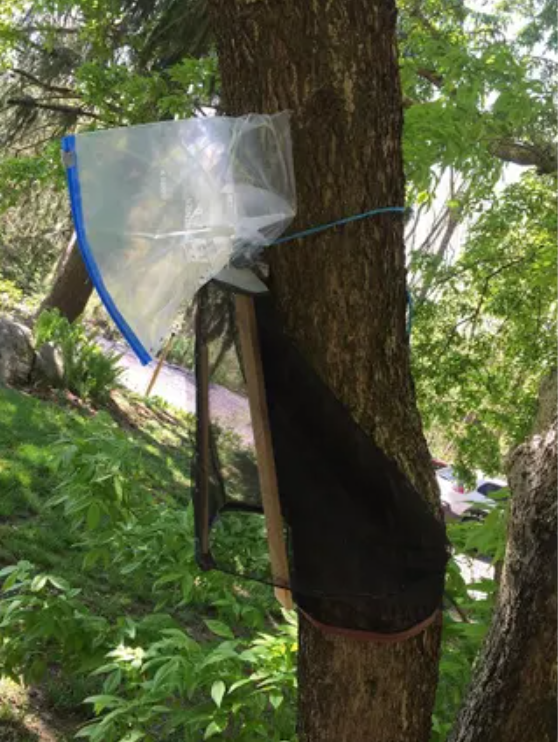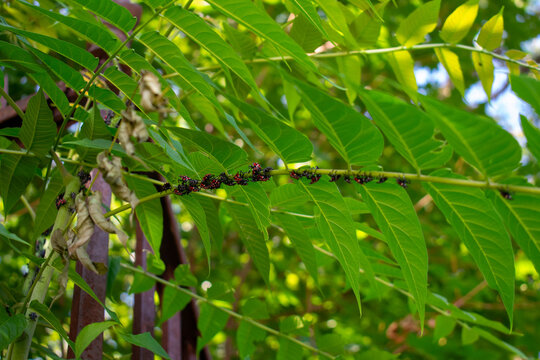Spotted Lanternfly

Spotted Lanternfly (Lycorma delicatula)
What is a Spotted Lanternfly?
The spotted lanternfly (SLF) Lycorma delicatula, is a planthopper native to China and Southeastern Asia. Discovered in Pennsylvania in 2014, and it has since been found in New Jersey, Delaware, Virginia, and New York. Despite efforts to quarantine and eradicate the pest, it has begun to spread throughout the Northeast United States. The Spotted Lanternfly poses a significant threat to the economy and the many forests of the United States. SLF feeds on sugary sap from over 70 species plants and trees, depriving them of nutrient access. Excretions of sticky honeydew from large collections of SLF can prevent sunlight from reaching trees and encourage the growth of sooty mold on plants. The combination of economic and environmental damage can restrict peoples enjoyment in parks and their own backyards.
How can you help?
Stop Them!
If you are out in a park or preserve and see spotted lanternfly or egg masses, squish them with a nearby stick or use your shoe. If eggs are seen on a tree, you should collect them with a water bottle or similar sized opening container to be sealed in and thrown away. Inspect outdoor furnature, firewood and vehicles for egg masses from October into June. If you see SLF eggs on your tree, they can be scraped off and placed in a container with hand sanitizer or alcohol to neutralize the eggs. Spotted Lanternfly Eggs can still be hatch from masses that have fallen on the ground and have not been properly damaged.

SLF Eggs covered (Left) SLF eggs uncovered (Right)

It takes one year for the Spotted Lanternfly to complete its lifecycle. There are four instars (a phase between two periods of molting in development of an insect) of the Spotted Lanternfly. During each of these stages the Spotted Lanternfly can dramatically change in appearance and characteristics. These stages of development usually vary throughout the season and it is common to see multiple stages of Spotted Lanternfly presnt at the same time.
Build a trap
If you want to make the most impact in your local area, build a trap where you can! These traps are very effective at catching SLFs as they move up a tree, which is a natural behaivor of the invasive insect. The style of the trap is built with a plastic-coated insect screening to create a tunnel for SLF to walk in. When they move upward in the trap they end up in a dead-end collection container where they die after 24 hours of not eating. These traps can be purchased from some commercial sources, or you can build your own out of household materials. To build a Spotted Lanternfly trap yourself, you can expect to spend around $5 - $10 on materials like plastic jugs, insect screening, glue and tape. Once built, these traps are most effecive placed around a Tree of Heaven (Ailanthus altissima) as this tree is preferred by the Spotted Lanternfly, learn how to identify tree of heaven here. Spotted Lanternfly may also be present on other sugar producing plant species such as grapes (including grapevines like porcelain berry), roses, and some hardwood species like maple, walnut, willow and poplar.

Educate yourself and others

Learn more about the Spotted Lanternfly (SLF) from the resources provided. Learn how to identify SLF and educate others about what it looks like at all 4 stages, how to spot egg masses and when/where to look for them. Educate your friends and family about the negative impacts caused by SLF to outdoor recreation and forest health. Understand the threat Spotted Lanternfly pose to not only the local environment but also the New York State Agriculture, Hardwood, Fruit, Wine and Tourism industries.
Monitor
Learn where to look for Spotted Lanternfly, their host species is the invasive Tree of Heaven but will also consume species of oak, pine, walnut, and willow. SLF are similar to aphids and are phloem feeders prefering to suck the sugary sap of grapevines, herbacious plants and trees like maple and apple. SLF excrete a sugary sap as they feed which can stick to leaves and grow sooty mold, blocking sunlight and leading to nearby plant stress. Sooty mold can also accumulate on outdoor furnature located below SLF feeding sights, accompanied by a fermented smell that attracts other bugs such as wasps and ants.
Report
Confirm New sighting locations on iNaturalist. Adopt a location or "gridsquare" on iMapInvasives to monitor for Spotted Lanternfly. Fill out a Public Report with NYS Ag and Markets ArcGIS Survey123.

